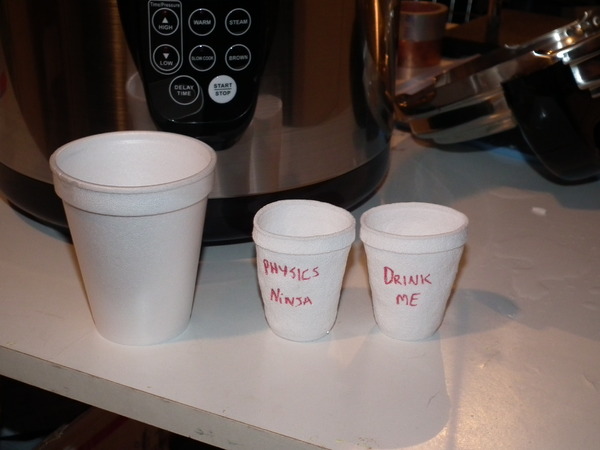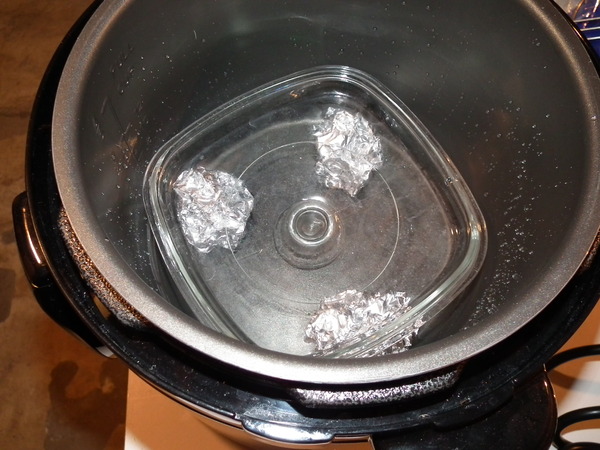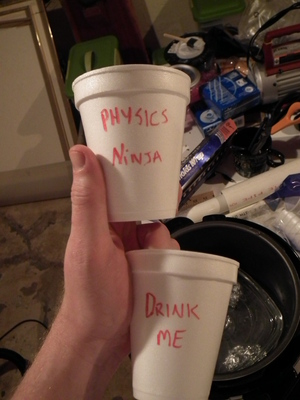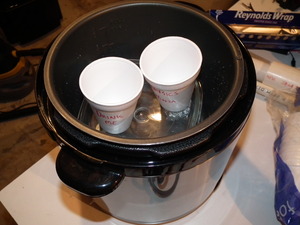Pressure Cooker Squished Cups
 Thursday, May 3, 2012 at 11:35PM
Thursday, May 3, 2012 at 11:35PM If you put expanded polystyrene (Styrofoam) cups in a pressure cooker and turn up the heat, they will shrink down to approximately 1/6 their original volume.
Procedure
As I'll explain later, you don't actually need a pressure cooker, though they work the best. I use an electric pressure cooker for the show since it is easier to use. I don't need a hot plate, and the countdown timer shuts itself off, but a stove top one works too.
Even gentle heating is important if you want the cups to keep their shape while shrinking. So, you want the cups out of the water, and on a flat surface that can take the heat but not conduct it too well to the cups. I use a Pyrex lid to a oven casserole. I lift it out of the water with three crumpled balls of aluminum foil.
Use permanent marker to write on the cups and place them in the pressure cooker. My cooker takes about 20 minutes at pressure to shrink the cups. You can crowd them in the container. They'll stick a little after you're done, but they easily pull apart.
How Does This Work?
A digression for a moment. When submersibles go down into the depths of the ocean, they often bring Styrofoam with them on the outside of the craft. It gets crushed, like in this picture from some cups taken down in the Alvin.
Does the pressure cooker do the same thing? The pressure cooker "only" has twice the pressure as usual. While that is enough to make a dangerous mess if the cooker were to rupture, that's not high compared to what the Alvin does. Two atmospheres is like going down to a depth of 10 meters. The cups get fully crushed on the Alvin at 300 m. Hmmm....
Perhaps it is the heat? Heat makes the Styrofoam soft and bendy. I'm imagining that the heat (and pressure) pops the foam, and the foam collapses back into its unexpanded state.
 Pressure,
Pressure,  thermo plastics in
thermo plastics in  Demos
Demos 





Reader Comments (2)
Learning to use a pressure cooker will allow you to cook healthier meals in a much shorter amount of time. Cooking in a pressure cooker can reduce cooking time by up to 70 percent. This method of cooking retains most of the natural vitamins and minerals that are lost during other cooking methods. Using a pressure cooker not only saves time and money, but also is more convenient and produces healthier meals. Read on to learn how to use a pressure cooker.
Nice experiment! You can really see the flavors condensing with those cups. Learning to use a pressure cooker is actually really easy, once you get the hang of it you can make amazingly delicious meals.